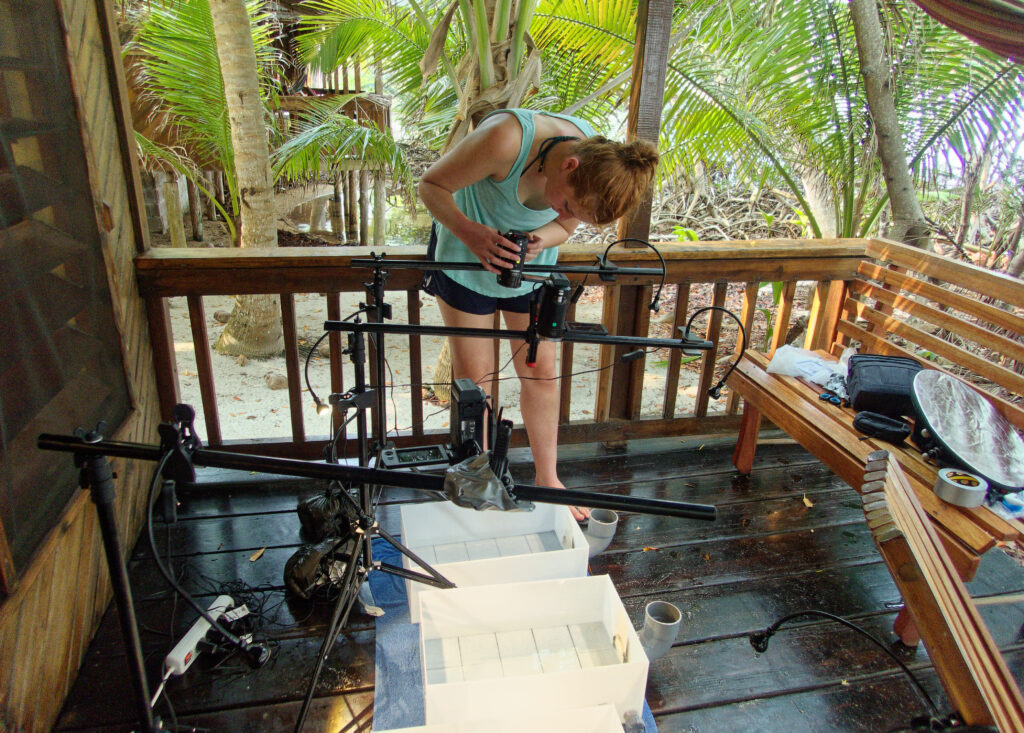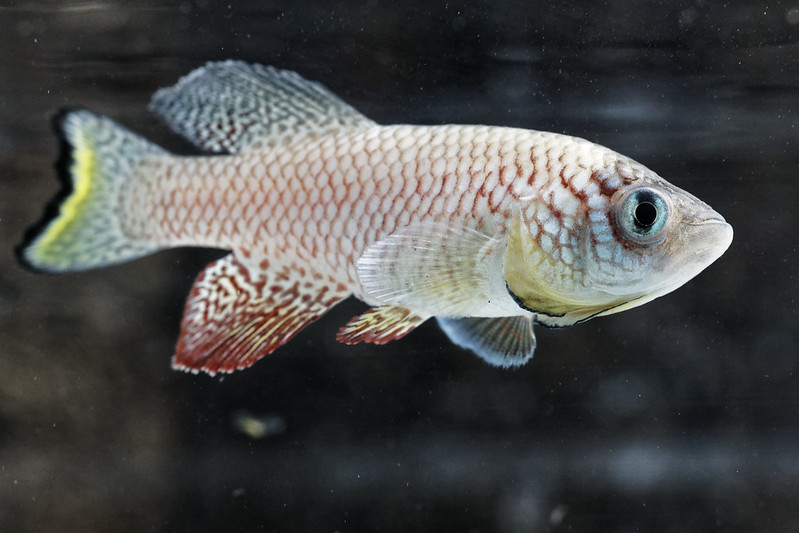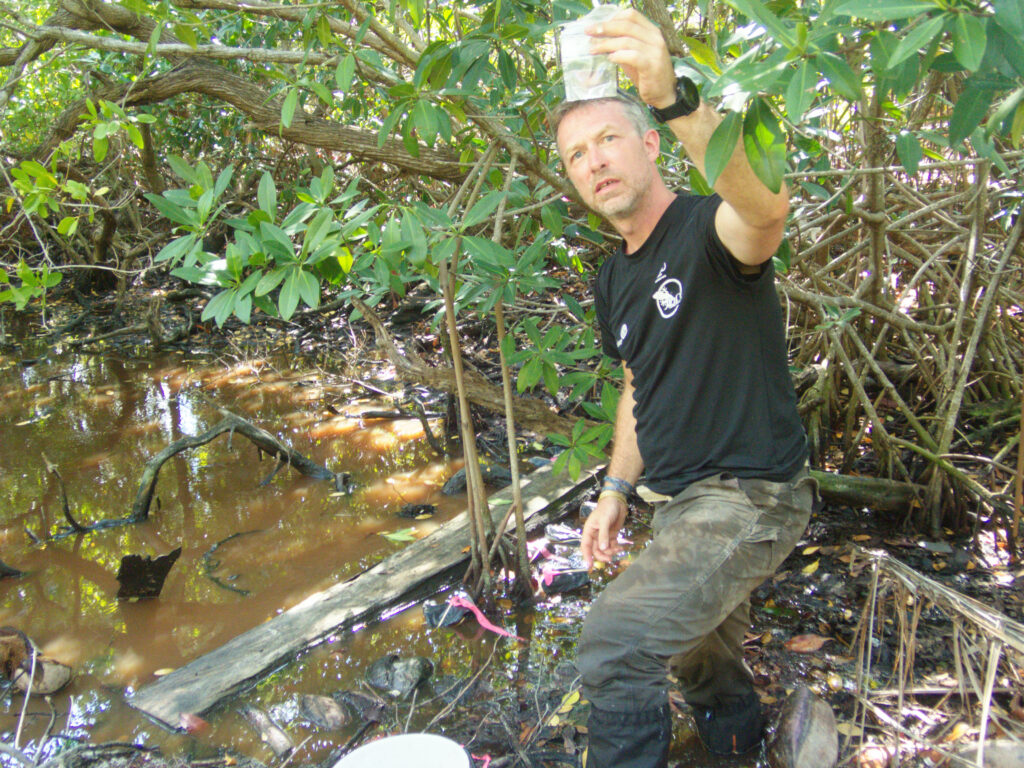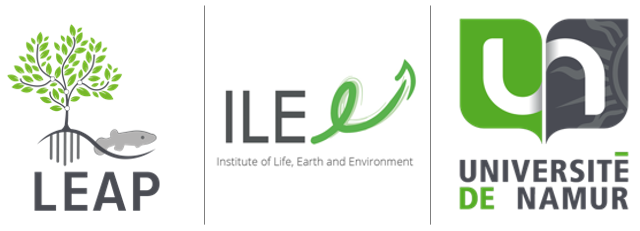What is our research theme ?
Since 2014, we have developed killifish facilities for the American mangroves fish: the mangrove rivulus. This species is unique because it is one of the only vertebrate species that reproduces mostly by self-fertilization of hermaphrodites, while males are present in variable proportion and allow cross-fertilization. There is no known female to date. The rivulus is thus a model of choice to understand the mechanisms other than genetic that can explain the expression of various phenotypes (morphology, physiology, behavior). Among these, epigenetic mechanisms (DNA methylation, post-translational modifications of histones, non-coding RNAs) are the main candidates, at the intersection between environment and genome, to explain how the environment modifies the level of expression of genes, without modifying their sequence and, in fine, how it modifies the phenotype. These effects of the environment on the epigenome represent, in a way, the missing link between, on the one hand, classical Darwinian evolution based on natural selection and the selection of favorable gene alleles, and, on the other hand, rapid adaptive evolution based on pheotypic modifications in response to environmental changes.

Our research is divided into 3 axes
Axis 1: We aim to understand the mechanisms governing the expression of personality traits. These traits are behavioral phenotypes that are specific to an individual and that define his personality. We are talking for example about the level of boldness, aggressiveness, activity, or exploration, to mention only the most known. Just like humans, fish (and other animals) each have a personality. Some are more bold than others (they take more risks), while others are more shy. The mangrove rivulus is an excellent model to study the expression of such personality traits in populations with very little genetic diversity. We are therefore trying to understand the possible epigenetic mechanisms in the brain involved in these behaviors.

Axis 2: Environmental disturbances are currently numerous and varied. Organisms have no choice but to adapt to them…or disappear. Our goal is to understand the long-term effects of environmental stressors on our killifish models. These are more relevant than short-term, or acute, effects, in that organisms are continuously in contact with low levels of stressors which can affect survival and population balance. Thus, we focus on two putative effects. On the one hand, we want to understand the effects that environmental stress present during the early life stages of the organism has on the adult animal. These effects are termed “permanent” if they are present from exposure to the adult stage, or “delayed” if they only appear later in the life of the animal, when the stressor has long since disappeared. The latter are of great human interest because they can explain the appearance of diseases at an advanced age when the environmental cause is to be sought much earlier. The mangrove rivulus, because of its low genetic diversity, is a model of choice to study the epigenetic mechanisms that can explain the long-term effects of stress. A second model studied in our laboratory is also a model of choice because it has the particularity to age very quickly (in 5 months) and thus to mimic human aging: the turquoise killifish, Nothobranchius furzeri. This fish lives in temporary ponds in South-East Africa. Several environmental stressors are studied but we mainly focus on the effects of neurotoxic compounds widely spread in the environment such as pyrethroid pesticides (permethrin, deltapethrin, bifenthrin, cypermethrin, etc).

Axis 3: Since Charles Darwin, evolutionary theories have been nourished by new scientific data that allow us to refine our knowledge of the mechanisms involved. The “extended evolutionary synthesis” theory aims to bring together classical Darwinian mechanisms with more recent observations such as epigenetic mechanisms. Using killifish models, we are trying to understand the role played by epigenetics in adaptation and evolution. To date, two major issues limit our interpretation. First, epigenetic variability is difficult to differentiate from genetic variance. This hinders a proper understanding of the actual role played by epigenetics in adaptation and evolution. On the other hand, for epigenetics to have a lasting effect on a population, it is necessary that the marks can be transmitted from one generation to the next. While this is possible, we are still far from fully understanding the mechanisms, and especially the limitations. To raise these questions, the mangrove rivulus is a model of choice since it naturally presents little genetic diversity, but this diversity is variable from one population to another. We are conducting field campaigns in Belize and Florida to monitor the epigenetic diversity of these populations. We are also trying to understand the passage of these marks between generations via what is called transgenerational epigenetic inheritance.

What are the applications of our research
In addition to producing fundamental knowledge on the biological models studied, on the ecosystems where these species live (such as mangroves), on the expression of personalities, or on theories of evolution, our research can lead to concrete applications useful to humans. We can thus mention:
– environmental risk assessment (ERA): in a world hit by global climatic or pollution changes, taking into account the long-term effects of stresses on organisms allows to better assess the risks (both in terms of human health and biodiversity), and thus to better manage them.
– the development of age-related diseases: the after-effects of an exposure to an environmental stress, such as a neurotoxic compound, can be dramatic in terms of public health, such as the development of neurodegenerative diseases. Our killifish models, with unique biological features (low genetic diversity or early aging), allow to better understand the development of such diseases, and thus to potentially treat them better.
– the origin of personality traits: a better understanding of the mechanisms governing the expression of personality traits will also lead to a better understanding of personality disorders or diseases that modify personality.
– the origin of phenotypic variations: understanding the origin of phenotypic variations in a population will allow us to better understand its adaptive potential and thus its potential to respond to a new environmental stress. Understanding the role played by epigenetic mechanisms in this phenotypic variation is fundamental to understand the evolution of certain diseases (e.g. cancers) or to predict individual responses to a pathogen (e.g. SARS-Cov2).
– biodiversity conservation: a better understanding of the mechanisms involved in the evolution of wild populations will allow to better define evolutionary units and to refine policies in terms of biodiversity conservation.
You can watch our documentary about searching for the mangrove rivulus:

